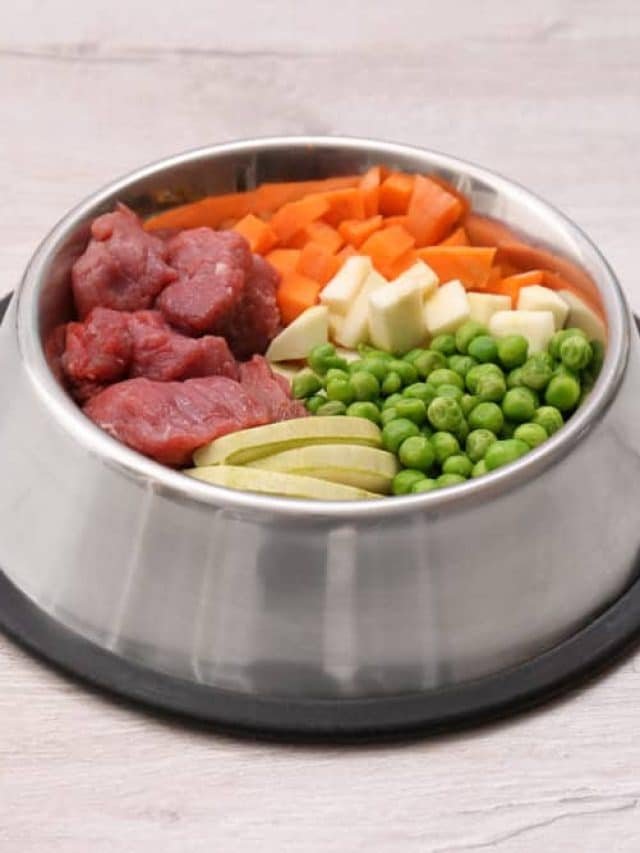Can Dogs Eat Peas?
Yes, dogs can safely eat peas in moderation. The following types are generally safe:
- Green peas
- Snow peas
- Sugar snap peas
Benefits of Peas for Dogs
- Bone Health: Vitamins A, B-complex, C, and K contribute to strong bones, healthy nerves, and a robust immune system.
- Skin & Coat Health: Peas contain lutein and linoleic acid, promoting healthy skin, eyes, vital heart function, and a shiny coat.
- Digestive Support: The fiber in peas aids digestion and can help prevent kidney problems.
Important Considerations
- Moderation is Key: Too many peas can cause stomach upset due to their high protein and vitamin content.
- Serve Cooked & Plain: Peas should be cooked and unseasoned for optimal safety and digestion.
- Avoid Canned Peas: These often contain high sodium and additives that are harmful to dogs.
How to Feed Peas to Your Dog
- Choose Fresh: Opt for fresh peas for maximum nutrient content.
- Wash Thoroughly: Remove any dirt or bacteria before serving.
- Remove Seeds: Take the peas out of their pods to make them easier to eat and digest.
Special Considerations
- Dogs with Kidney Disease: Peas should be avoided for dogs with kidney issues due to their purine content, which can contribute to kidney stone formation.
- Portion Control: Talk to your vet to determine the appropriate amount of peas for your dog based on their size and breed. A general guideline is a tablespoon for large dogs and a teaspoon for smaller breeds.
Key Takeaways
- Peas can be a healthy, occasional dog treat when cooked, unseasoned, and served in moderation.
- Overfeeding peas can cause digestive issues.
- Avoid giving dogs canned peas, and consult your veterinarian if you have any concerns, especially if your dog has health conditions.
Do dogs like the taste of peas?
According to research on canines’ behavior, dogs react when getting peas to eat. Dogs are fond of the taste of these pea pods; the most significant reason behind this is the crunchiness of the fresh peas.
Dogs are mostly attracted to these fresh peas because of their slightly sweet taste and beneficial nature.
Now, the fact to notice here is that just because the dogs are more fond of the taste of these fresh peas than other veggies, the owner should not add too many peas to the pet’s diet.
This is because the consumption of too many peas at a time can lead to different types of health issues like choking hazards, high blood pressure, gastrointestinal upsets, and many others.
While on the way to feed peas, the pet parent should strictly go for a vet checkup of the canine to decide the proper amount according to the canine’s nutritional deficiency and should include it in the dog’s diet accordingly.
What are the benefits of peas for the canine?
The dog owner needs to know about the benefits of feeding peas to dogs. Peas can be beneficial only when given the proper dose; knowing the benefits will help the dog owner determine the proper amount according to the canine’s nutritional requirements.
The benefits of this healthy treat are listed below, which also shows why it should be included in the dog’s diet.
Provides better bone health – The popular benefit of feeding your dog this healthy treat is the proper bone health of the canine.
The presence of several vitamins in it, like vitamin A, vitamin B1, vitamin B6, vitamin C, and K, strengthens the canine immune system, promotes healthy nerve and muscle functioning, promotes proper eye health, and eventually leads to better bone health.
Provides healthy skin and fur—The other most significant benefit of feeding your dog peas is better dog skin and a better texture of the canine’s fur. A unique type of nutrient present in this pea, lutein and linoleic acid, is responsible for better eye health, a better texture of the skin, a healthy heart, and dense fur over the coat. Thus, peas are suggested to be included in the dog’s diet.
Promotes a healthy digestive system—Consuming these peas also promotes a better digestive system in dogs and prevents kidney problems.
Peas are generally rich in high fiber, which reduces cholesterol and promotes the digestive system functioning of dogs.
Can dogs eat peas?
Yes, peas are considered safe for dogs, whether they are English peas, green peas, or snap peas. All these peas are safe for dogs’ consumption until they are served without any additives like human-friendly spices.
Moderation should be strictly maintained while feeding your dog peas, as the high protein content and the high amount of vitamins in them might lead to gastrointestinal upset and interruption in the canine’s digestive tract and can even turn the dog lethargic. Thus, peas should be given to dogs moderately without salt and other additives.
Can dogs eat canned peas?
No, canned peas are not at all suggested for dogs. This is mainly because most of the time, the manufacturers add lots of sodium or other additives like xylitol to vegetables with several fibers to make the peas good and more preservative for dogs. Thus, the dog should avoid canned peas.
The fibers and chemicals, like sodium, used in canned peas to make them more preservative can be extremely toxic for dogs and might also lead to cell damage, high blood pressure, and extreme stomach upset; hence, it is not safe for dogs to eat. Thus, the owner should strictly prohibit the dogs from eating these canned peas and avoid feeding them to the animals.
Can dogs eat frozen peas?
Yes, frozen peas are considered safe for dogs. Not only will they be beneficial, but they will also work as a great treat for your canine in the summer season and will be refreshing.
Frozen peas can also play a major role in controlling canine anxiety, as dogs usually chew things when they get anxious.
The only thing to notice while serving fresh or frozen peas to dogs is that they should be free from human-friendly additives like salt and paper to avoid diseases like kidney stones, uric acid, and stomach aches. This will also work as a great training treat for dogs.
Can a dog eat salted peas?
No, the consumption of salted peas is not considered safe for dogs and puppies. This is mainly because the extra spices like pepperoni and salt used in them might lead to a burning stomach and the formation of ulcers in the canine’s stomach, which can be extremely discomforting and can lead to abrupt vet visits.
Thus, it has always been suggested to dog owners to avoid feeding these salted peas to their dogs to avoid issues related to them, such as choking hazards, kidney problems, and stomach upsets.
Are cooked peas suitable for dogs?
Yes, the consumption of cooked peas can be beneficial for canine health. Cooking the peas creates several interesting options for the dog owner to feed peas to the dogs.
The owner can add this to salads, serve it with chicken cubes, or boil it slightly and serve it by sprinkling some nutritional yeast to add flavor.
Thus, based on this, as the canine will get a diverse range of flavors in the cooked peas, he will get more attracted to the cooked ones.
How many peas can the canine eat per day?
Dog owners need to know how much of these peas, whether snap peas, green peas, or snow peas, is safe for dogs. This will ensure that the consumption of this nutritional treat is safe for dogs.
It has always been suggested to the owner to go for a proper vet’s discussion as the canine’s requirements regarding this vegetable might vary according to its size and breed.
Most of the time, one tablespoon of peas is appropriate for larger dogs, whereas one teaspoon is enough for small dogs and should be without salt.
Can dogs with kidney disease eat peas?
No, the consumption of peas for dogs with kidney diseases should be strictly avoided. As peas contain a type of substance, naming purines is found to be toxic for the canines suffering from kidney disease.
Purines produce uric acid after being absorbed in the canine’s stomach and filtered through the kidneys; too much uric acid can lead to kidney stones. Thus, it is strictly suggested that dogs with kidney disease be avoided.
How many peas can be toxic for the canines?
Pea consumption should never exceed the amount suggested by the veterinarian, as it is exactly according to the canine’s nutritional requirements. Increasing the amount suggested by the vet might lead to lethargy behavior, stomach aches, and even pancreatitis; thus, it must be avoided.
How to feed peas to the canines?
The owner should be strictly aware of properly feeding this pea to the canine. Proper feeding your dog will not alter the number of vitamins and will keep the peas good for the canine’s consumption. The steps to follow are below.
Choose the fresh ones—Always choose fresh peas from the market. The vitamins, minerals, and antioxidants remain in active form in the fresh ones and react faster with the body’s enzymes.
Wash it properly—Always wash the peas properly, as this will remove the bacteria and pathogenic compounds in the peas and make them safe for dogs to consume.
Pick out the seeds: First, slit the shell of the pea and then try to take out the seeds one by one from the pea pod. The pea’s good nature will benefit the consumer to a great extent if consumed in the right way.


